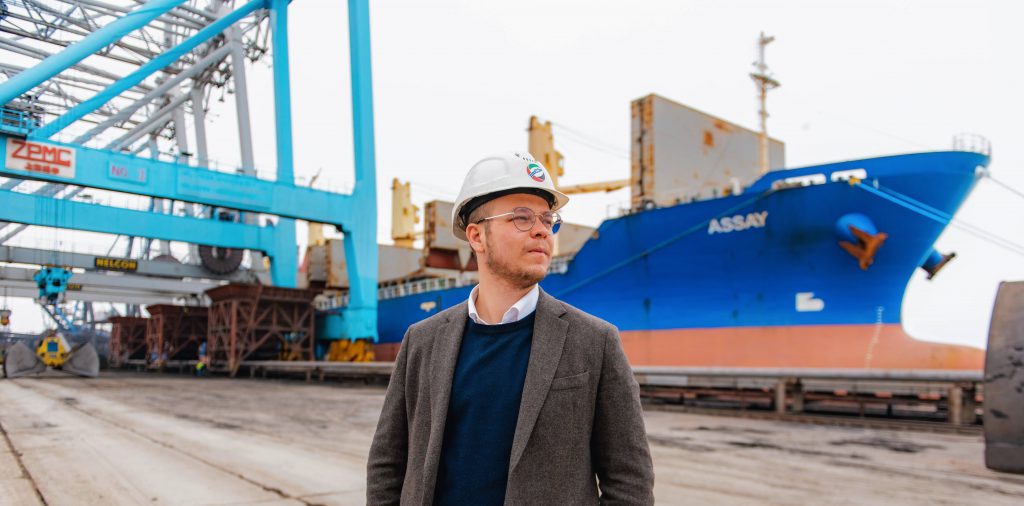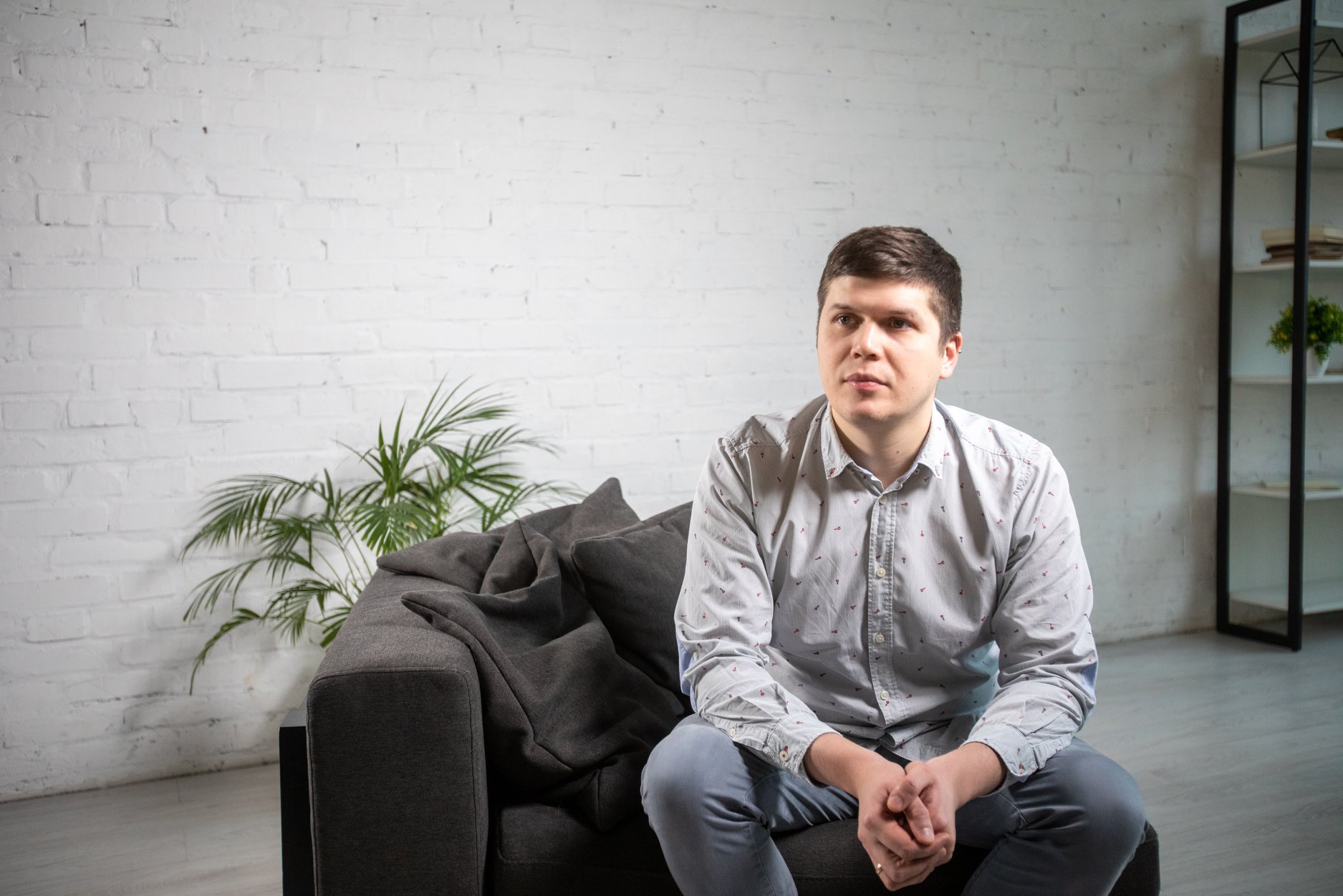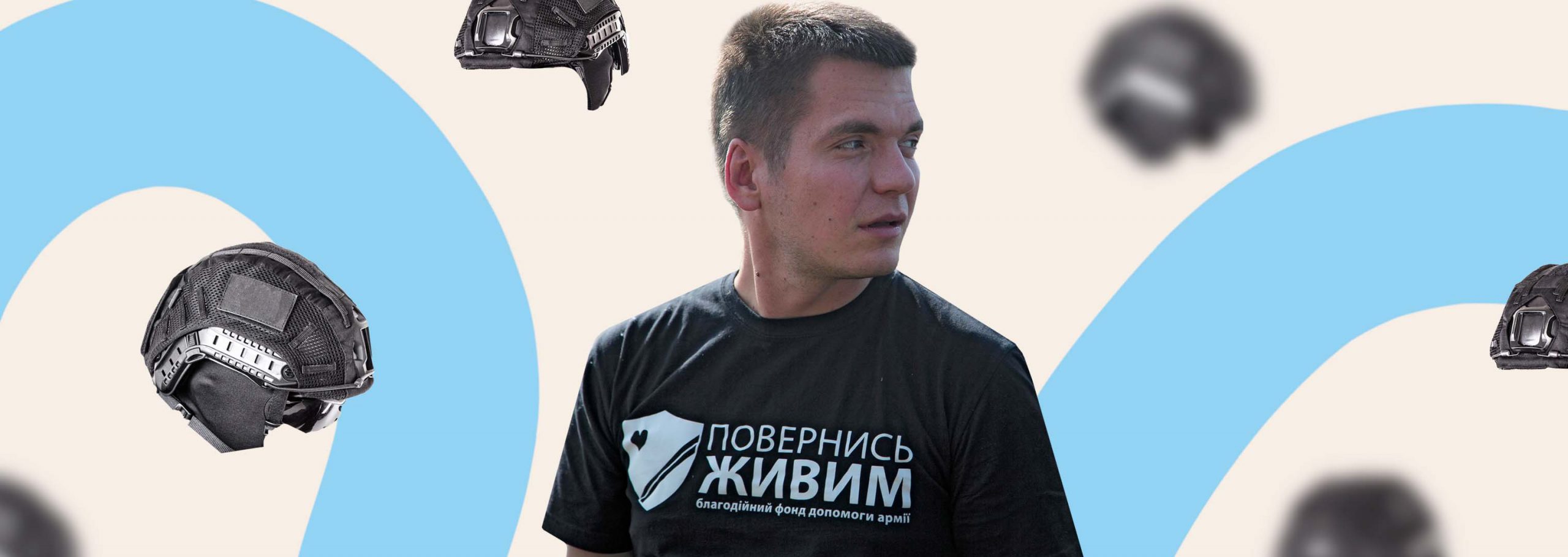FAST provides 150 international and Ukrainian companies with safety services by teaching the personnel to provide first emergency medical aid and supplying the necessary equipment as well as holding fire safety exercises. We talked to Fedir Serdiuk, the founder of FAST, about social entrepreneurship, altruism and money.
How did FAST? Did you want to start up a business or was your original idea to help people?

Everything is very simple. I was not pursuing the goal of doing business. At the initial stages we could not have imagined the format that we have got used to now. The story of FAST began with the events that took place on May, 2 in Odesa (On 2 May 2014, as part of the rising unrest in Ukraine in the aftermath of the 2014 Ukrainian revolution, multiple clashes between pro-Maidan and anti-Maidan groups broke out in the streets of Odesa, which resulted in dozens of fatalities – editor’s note). It came as a personal revelation to me when I found out that some of those who died could have been saved. The only condition that has to be fulfilled is the timely first medical aid. For example, a person may die after bleeding for 4 minutes. Unfortunately, it takes the ambulance more time to arrive at the scene. Basic skills of those who happen to be nearby may help maintain life of the injured person until the ambulance arrives. Ihor Korpusov (the co-founder of FAST – editor’s note) and I met with Taras Lohinov, a famous Ukrainian volunteer and charity worker who spearheaded the rapid response department at the Red Cross. He offered us to join the team, which we gladly agreed to.
After some time we came to understand that the existence of such a department gives no guarantee that a rescuer will be near every injured person at any specific time. There was a need of a bigger number of people who would undergo training and…
Forgive me for interrupting, but how did you manage to acquire sufficient amount of knowledge within such a short period of time?
This is not an easy question as it can only be answered in the context of the events that took place in May 2014. When it transpired that Odesa was following the same scenario as Donetsk, it was not yet clear what would happen to Ukraine. The country was at war and without thinking for too long we took control of the situation. To be more precise, we decided to act instead of sitting on our hands. We were teaching others the things we had learned ourselves before and we were doing it to the best of our ability. We acquired really expert skills somewhat later, at the end of 2014. Our goal was not to become accomplished instructors, but to do at least something in order to provide help here and now. By the way, the situation back then seemed way worse than it was in reality. We saw that there was a major risk of events unfolding in a way they do now in Afghanistan, for example. It was a complete loss of security. We were not involved in providing first medical aid as part of business. We were just teaching people free of charge. Having done a significant number of educational courses at the end of 2014 (including the ones conducted by experts from Czech Republic, the USA and Israel), we felt a desire to jump right into the thick of it and keep ourselves busy with first medical aid in earnest. It was impossible, though, to keep doing that with our own money.
Such people as Egor Grebennikov (a Ukrainian entrepreneur, investor and founder of the Impact Hub Odessa — editor’s note) provided us with space, display torsos and other equipment. However, one cannot depend on donors forever.
Apart from that, back then we were already conducting trainings for the army, which implied an immense scope of work. It was at that time that we started selling first aid services. We donated all the proceeds on charity.
Did you reach the point of having built, tentatively speaking, a business-model? Were you thinking about something like ‘in three years I want to achieve this, and in five years’ time I want to be there’? Or were you taking ad hoc decisions?
I clearly understood three things. These were three key ideas that I firmly believed in and that everything hinged on.
First, civilians are also interested in doing first aid trainings. There is nothing wrong in charging them for these services.
Second, the representatives of the military should be taught this by the state (such preparation cannot be provided by a 19- or 20-year-old guy driven by sheer enthusiasm and paying for this out of his own pocket). The army has to pick up the torch. Our goal was to buy some time.
Third, I have always wanted to achieve the best result possible for every single effort. If you are able to teach both 10 and 100 people a day, you must be aiming for the latter. We have always been looking for opportunities to scale up.
We stopped working with the army somewhere in 2016 after we understood that the government would have plenty of time to take care of the process on its own. So, we started to promote cooperation with private businesses since it seemed a more effective undertaking than working with private entities. Of course, we are still doing some things on our own dime, such as promoting the idea of first aid or providing an opportunity to undergo trainings for those who need it.

Tell me about the ‘selection criteria’, please. When do you charge for trainings and when do you do that for free?
We teach first aid based on the risks that the participants are faced with. If they work at a factory, the risks that their job entails are of one sort, if we are talking about working at the office, the risks are different, if it’s a kindergarten, the risks will also differ. The content of the educational first aid program depends on the risks that our specific target group is facing.
Generally, we provide our services to companies against remuneration. They are aware of this fact, they are content with the quality of the services and they may regulate it.
Our free services are – first aid chatbot, that we support and pay for and a video channel, whose content can be watched for free. This system of educational videos may be unique to entire Ukraine.
In terms of offline education, we accept requests and assess our capacity. If we see that the initiative to use our services comes from real people (and they really want to learn) and not for the sake of report to be written by some general, we may pay for such education. If we see that a certain team is actually motivated, we will work this way. Among our clients we also have journalists, charitable organizations (e.g. Tabletochki – (a Ukrainian charitable organization providing help mostly to children suffering from cancer – editor’s note)) and other organizations, such as orphanages. There we conduct staff trainings provided the management of such organizations is motivated and has sent us a request.
Let’s touch a bit on your team. How were you forming it while you were just starting out and what principles do you stick to when selecting candidates today?
First, there was a group of fellow thinkers. Most of them had worked with the Red Cross or volunteered for the army independently from us. We got united and a certain kind of synergy appeared. At that time the volunteers’ movement was at its peak.
КWhen we started to develop business processes, we split the responsibilities up in the following way: I became in charge of communication (telephone calls, negotiations) with Ihor assuming the responsibility for everything that required patience. Furthermore, he and I were teaching first medical aid. It was quite difficult for us to use someone as a reference, so we were piloting an author-developed work model. For the sake of discussion, it consists of the human capital block (comprising instructors, experts and everything that goes with them) and the operational block (trainings and consulting), plus specialists whom we need ad hoc.
Currently our system is more complex since we cooperate with the company ‘Promyslova bezpeka’ (the Ukrainian for ‘Industrial safety’ – editor’s note) in one of the domains.
‘Promyslova bezpeka’ and FAST are two independent companies whose teams joined up with one another for the sake of the common cause.
‘Promyslova bezpeka’ works in the field of production safety. I find it quite challenging to describe the model of our cooperation. I can draw it for you if you like… The thing is that we have developed some sort of circular management. Different people may belong to one or several circles. For instance, operational director may be part of the consulting circle and a production safety expert can be member of the operational activities circle (trainings). In other words, there is a team whose members split up into different teams that solve different tasks. This model has proven quite convenient.

You said that when you were setting FAST up there was no such other model on the market. Could you elaborate on the fundamental difference between FAST and its competitors?
If you take a look at the different stages of our life cycle, the current FAST differs to a considerable degree from the FAST of 2018, let alone the FAST of 2014. At that time our business model was lacking an adequate commercial component. Its three main parameters now are
First: modern healthcare standards, i.e. protocols common for Western countries which we bring over here and adapt to our market. We don’t want to make the most of the protocols that were used back in the Soviet times. We want to do things as they are done in the West. We have never been taught by Soviet experts, which means our way of thinking has not been afflicted.
Did you study abroad for this purpose?
First, I was taught by foreigners in Ukraine. I also made trips abroad (e.g. to the USA) to see how they address this issue. Generally speaking, when I use the comparison of ‘foreigners vs. old school’, I mean by the latter the subject ‘Healthcare’ taught at schools and the nurse that will tell you to put a spoon into a mouth of a person who is having an epileptic fit… By ‘new school’ I mean, for example, the European Resuscitation Council. When we talk about military affairs, we imply the TCCC (Tactical Combat Casualty Care – editor’s note) system used in the American army. What we did was adopt the method deployed abroad in the realm of healthcare. We borrow best Western practices and adapt them to the Ukrainian context.
Second, at some point we started speaking the same language with businesses. We still do.
A big problem which the vast majority of the organizations generally involved in good cause face is that they want to cooperate with the private sector but they don’t speak the same language and they don’t want to understand the representatives of the latter. They usually say that the goal they pursue is so important that it is the private sector which is supposed to ‘learn the language’ of these organizations and not the other way around. Unfortunately, it does not work that way.
Anyways, it did not work in our case. Therefore, we had to learn about what commercial offer is, about tender procedures, budgets, specifications, tender calls, certificates of delivery and acceptance, etc. Our partners now find it much easier to work with us not only in terms of receiving our services, but also of buying them.
Third, we are proactive when it comes to innovations, communications and commerce. We have been looking for quite some time for a model that would enable us to quickly detect our company’s needs that are not necessarily evident. This model also allows us to make an offer comprehensible to the private sector in terms of recouping investment. If you talk to 80% of the companies from the private sector, they will tell you that they are doing just fine and they don’t need any help. Therefore, you have to know how to make an offer.
The situation where a company is not aware of just how acute its problems are is perfectly demonstrated in the HBO Chernobyl series. One of the engineers there put the situation like this, ‘It is neither perfect, nor is it terrible at the same time’ while looking at the X-ray counter going off scale.
We address a hidden issue, or the so-called latent demand. To highlight this demand is our main challenge.
Give me an example of a couple of cases related to FAST that have significantly influenced you.
First, it is worth mentioning that I am extremely happy every time one of our students saves someone’s life. In this case you understand the meaning of your work and its importance even if you have never seen these people; I mean the rescuer and the injured person. I derive much satisfaction from being aware of this fact which is the main driving force of our work. Much as pragmatic I am, I constantly bear in mind that the goal of our work is for such stories to happen, the story of one person saving the other before the ambulance arrives.
It’s a big buzz and it motivates you.
Second, a great many people, such as Egor Grebennikov, Andriy Stavnitser, Serhiy Marchenko and Vadym Orlov (the list can go on and on) have been helping me from the very beginning. At 19, when I was just beginning to get engaged in this activity, I knew effectively nothing about it. At the initial stages any financial aid was vital. Of course, now these sums no longer seem to be considerable, but back then even 10 thousand UAH (nearly 400 USD – editor’s note) in the form of a grant made the difference.
Egor Grebennikov once said that even a tiny amount of money given to the right person at the right time might produce far-reaching results. Their financial and intangible aid was very useful. I would say that it’s not about a concrete acquaintance; it’s rather about people willing to help and put in their effort and time. I find it essential and it means so much to us. This has helped us a lot and always will.
And finally to my third point – I am sure that the window of opportunities is quite big. I have participated in the World Economic Forum in Davos. I have met all the celebrities there, having made use of the opportunity to expand my horizons and share experience.
In fact, while collaborating with the world, the world collaborates with you. As the saying goes, the sky’s the limit, if you have a good idea and the energy to implement it.
Now the situation in our country is surely more closed and people have adopted a ‘wait-and-see’ approach. The pandemic and economic recession have taken toll on society. However, globally everyone is happy to cooperate.

How would you describe the point that FAST has reached so far and the direction you are going to take? On another note, in your opinion, what would the private sector in Ukraine look 20 or 30 years from now? Is there anything you are lacking?
FAST makes part of the Ukrainian private sector. We are part of equation. We have reached this level of visibility, consistency and trust, where the better the market and business environment, the better we fare. We directly depend on the well-being of the whole sector.
Our ‘homework assignment is’ to make other companies recognize us on the market.
In general, we grow along with the Ukrainian businesses. Plus, we keep constantly working on our internal improvements as well as searching for opportunities at the global level. Earlier our product limited itself to first aid trainings. Now we have added trainings on fire and industrial safety. In other words, on a global scale we keep providing key players with our services and we want to make their life better.
The better these players fare, the faster we grow.
Radical changes are possible only if some fundamental shifts occur, for instance, if Ukraine shifts from the ‘watchdog’ safety approach to the insurance mode, which will enable business to reduce their expenses.
Can you describe the state that the Ukrainian private sector currently finds itself in?
Large companies are currently on our radar’s screen. Medium and small-sized enterprises are quite flexible, innovative and anti-fragile models. In times of crisis big companies are the first to crumble. The number of medium and small-sized enterprises shrinks at first and then gradually gets restored. So, I would like the number small and medium-sized enterprises to grow. Julie Meyer, business theoretician and businesswoman, has coined the phrase in this regard – ‘the land of entrepreneurs’.
And I would surely like international players to come into the Ukrainian market (even is a carrot-and-stick approach is should be deployed), since the safety conditions at the Ukrainian companies are a far cry from those common for their Western counterparts. When an international company does IPO (starts selling its shares on a stock exchange), the price of its shares hinges on the company’s safety regulations. If an accident has been registered at this company, the price of its shares plummets. Shareholders do not want this to happen, which is why they are always motivated to invest in safety. This is normally not the case in Ukraine. It is up to each CEO whether they want their companies to be safe or not.
Here are the free resources launched by FAST:
- The first aid chatbot ’DZHHUT’ (the Ukrainian for ‘tourniquet’ – editor’s note) which sends you simple interactive instructions on how you can help other people in different situations;
- The Youtube-channel on first medical aid.







